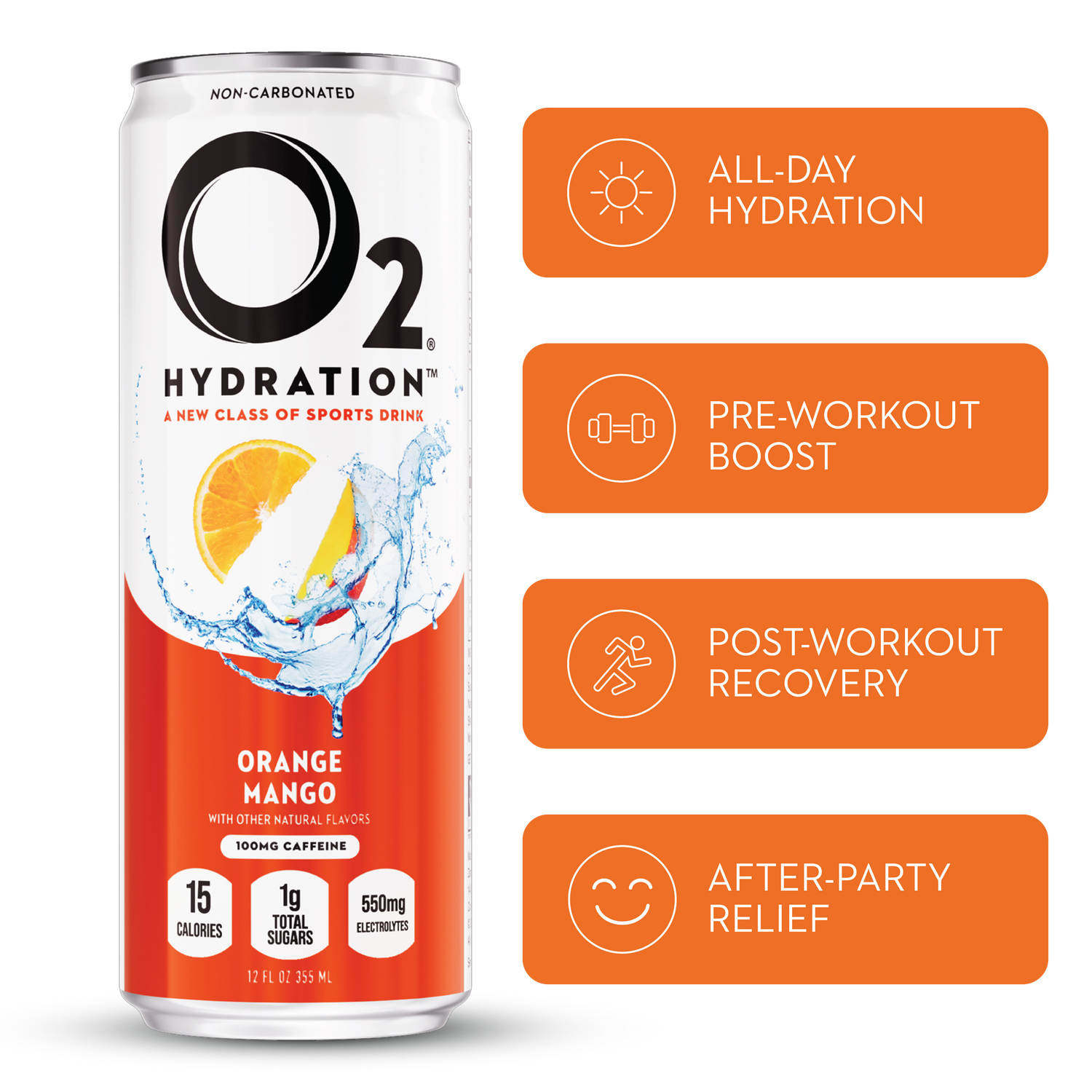
Aluminum Recyclability: The Case for Canned Water
Share
Tens of millions of Americans throw away plastic bottles each day. It’s no surprise that landfills are overflowing with plastics. When O2 first rolled out our Oxygenated Recovery Drink, no one questioned our use of an aluminum can--it’s common for the category. However, now that we are introducing O2 Water in cans, we’ve heard the question, “Hey guys, why the canned water?” We’re so glad you asked.
Rates of Aluminum Recycling
Aluminium cans are recycled much more often than other beverage containers, such as plastic bottles. Consumer recycling rates for aluminum cans are almost 50% vs. 29% for food-grade plastic bottles. Why is that?
There’s a well established system for aluminum recycling in the U.S. that dates back almost 70 years, and we all have William Coors (as in the beer) to thank for this. In the 1950’s, he led the effort in the beverage industry to move away from other materials, such as tin or glass, to aluminum containers. He also instituted the deposit and payment program to encourage consumer aluminum recycling efforts and established the processes via distributors to facilitate the returns. Cheers to him!
There is greater efficiency in the aluminum recycling industry today, as compared to that of plastics, perhaps because of these years of experience or the early investment in the process. Of course, the value of aluminum also encourages manufacturers to find good solutions to extend its life. If we’re keeping score, as a material, it’s worth 400% more than plastic (per ton). As a result, the same research shows that 75% of aluminum currently in circulation is recycled. Plastic is relatively cheap to make and not as useful once recycled. So even if recycling rates for plastic look decent, the value of that recycling is less exciting--very few bottles are made back into bottles. Let’s explore this further.
Infinite Recyclability of Aluminum
Aluminum can be recycled infinitely. The material itself is able to withstand the recycling process and retain its value and usefulness for many cycles. While an aluminum can has the ability to be melted and molded into other products, most of the time, it’s turned right back into a beverage container. That cold canned water in your fridge? It’s made up of 73% recycled material. The same is not true for the plastic bottle sitting next to it. On average, plastic bottles are only 3% recycled material. Industry experts point out that much of the plastic recycled from bottles ends up downcycled into other materials like polyester fibers. These downcycled items themselves aren’t usually recycled, so they break the recycling chain and end up in a landfill.
The main reason for the short lifespan of plastics? Recycling old plastic bottles into new plastic bottles can be challenging, as the material is tough to clean to the necessary food-grade standards. This adds to the cost of recycling what is already a cheap material. In addition, the recycling process of shredding plastic breaks down its structure (i.e., the polymer chains), which has traditionally made it difficult to create another bottle without mixing in a majority of new plastic. That kind of defeats the purpose, right? New innovations in plastic recycling are trying to tackle this issue, but the adoption is slow going.
Putting O2 Water in Cans
For our part, we like that O2 Water in aluminum cans has attracted your attention. We hope you enjoy it. And after drinking our canned water, we hope you recycle it. Let’s all do our part to reduce landfills and add to the infinite recycling loop: we want our O2 cans to live many, many lives.
All that said, for us, being canned is just one part of what makes O2 the best choice on the market. The oxygen-infused water inside tastes smooth and refreshing, and research shows that drinking oxygenated water post-workout can help with lactate clearance and recovery. Be good to the Earth, and be good to your body...try a case of O2 Water today.
